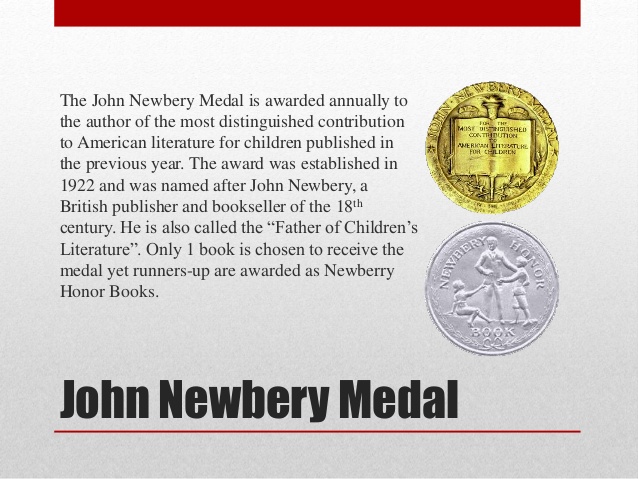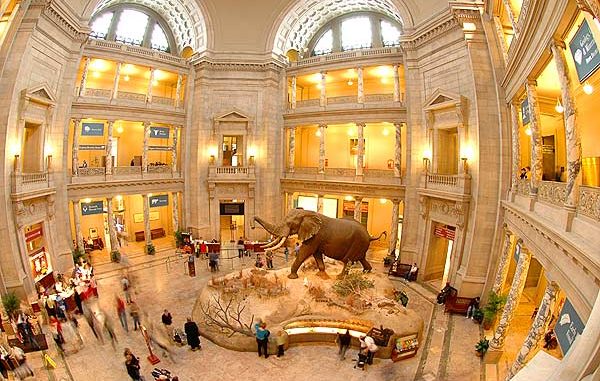It’s Tuesday… Phew! Did you know…
* 2003 – Canadian Multiculturalism Day First Celebrated. (Multiculturalism, as a term, first came into vogue in Canada in the 1960s to counter “biculturalism,” popularized by the Royal Commission on Bilingualism and Biculturalism. It has to a considerable extent replaced the term “cultural pluralism,” although that term is still used in Québec. Its use has now spread from Canada to many countries, notably Australia.
In many ways a contested concept, multiculturalism is used in at least three senses: to refer to a society that is characterized by ethnic or cultural heterogeneity; to refer to an ideal of equality and mutual respect among a population’s ethnic or cultural groups; and to refer to policies implemented by the federal government in 1971 and subsequently by a number of provinces.
The federal government of Prime Minister Pierre Trudeau declared its commitment to the principle of multiculturalism in 1971 and in so doing formalized a policy to protect and promote diversity, recognize the rights of Aboriginal peoples, and support the use of Canada’s two official languages. This led to the establishment in 1973 of the Ministry of Multiculturalism as well as the Canadian Consultative Council on Multiculturalism.
The concept was again acknowledged in the Charter of Rights and Freedoms of 1982, which states that the Charter itself “shall be interpreted in a manner consistent with the preservation and enhancement of the multicultural heritage of Canadians.” On 21 July 1988, the Progressive Conservative government of Brian Mulroney passed the Canadian Multiculturalism Act, which formalized the government’s commitment to “promote the full and equitable participation of individuals and communities of all origins in the continuing evolution and shaping of all aspects of Canadian society” by establishing legislation to protect ethnic, racial, linguistic and religious diversity within Canadian society.
On November 13, 2002, the Government of Canada, by Royal Proclamation, designated June 27 of each year as Canadian Multiculturalism Day.
Canadian Multiculturalism Day is an opportunity to celebrate our diversity and our commitment to democracy, equality and mutual respect and to appreciate the contributions of the various multicultural groups and communities to Canadian society.)

* 1950 Truman orders U.S. forces to Korea. (On June 27, 1950, President Harry S. Truman announces that he is ordering U.S. air and naval forces to South Korea to aid the democratic nation in repulsing an invasion by communist North Korea. The United States was undertaking the major military operation, he explained, to enforce a United Nations resolution calling for an end to hostilities, and to stem the spread of communism in Asia. In addition to ordering U.S. forces to Korea, Truman also deployed the U.S. 7th Fleet to Formosa (Taiwan) to guard against invasion by communist China and ordered an acceleration of military aid to French forces fighting communist guerrillas in Vietnam.
At the Yalta Conference towards the end of World War II, the United States, the USSR, and Great Britain agreed to divide Korea into two separate occupation zones. The country was split along the 38th parallel, with Soviet forces occupying the northern zone and Americans stationed in the South. In 1947, the United States and Great Britain called for free elections throughout Korea, but the Soviets refused to comply. In May 1948 the Korean Democratic People’s Republic–a communist state–was proclaimed in North Korea. In August, the Democratic Republic of Korea was established in South Korea. By 1949, both the United States and the USSR had withdrawn the majority of their troops from the Korean Peninsula.
On June 27, President Truman announced to the nation and the world that America would intervene in the Korean conflict in order to prevent the conquest of an independent nation by communism. Truman was suggesting that the USSR was behind the North Korean invasion, and in fact, the Soviets had given tacit approval to the invasion, which was carried out with Soviet-made tanks and weapons. Despite the fear that U.S. intervention in Korea might lead to open warfare between the United States and Russia after years of “cold war,” Truman’s decision was met with overwhelming approval from Congress and the U.S. public. Truman did not ask for a declaration of war, but Congress voted to extend the draft and authorized Truman to call up reservists.
On June 28, the Security Council met again and in the continued absence of the Soviet Union passed a U.S. resolution approving the use of force against North Korea. On June 30, Truman agreed to send U.S. ground forces to Korea, and on July 7 the Security Council recommended that all U.N. forces sent to Korea be put under U.S. command. The next day, General Douglas MacArthur was named commander of all U.N. forces in Korea.)

* 1976 Ebola breaks out in Sudan. (A factory storekeeper in the Nzara township of Sudan becomes ill on this day in 1976. Five days later, he dies, and the world’s first recorded Ebola virus epidemic begins making its way through the area. By the time the epidemic is over, 284 cases are reported, with about half of the victims died from the disease.
Symptoms of Ebola hemorrhagic fever generally begin about four to 15 days after a person is infected with the virus. The average victim will first notice flu-like symptoms, such as a high fever, aching and general weakness. Usually, this is followed by diarrhea, vomiting and the eruption of rashes all over the body. Then the person may begin bleeding from any and all body orifices and internal organ damage begins. Within seven to 10 days, exhaustion, dehydration, and shock set in.
After the storekeeper in Nzara died, a second man in town died on July 6. His brother became sick soon after but managed to recover. The brother’s co-worker went to the hospital on July 12 with symptoms and was dead two days later; the co-worker’s wife died five days after that. A week later a male neighbor died. Eventually, another 48 infections and 27 deaths were traced back to the neighbor.
Given this pattern of infection and the fact that hospital workers also started to develop symptoms, doctors realized that transmission of the virus required only close contact. At Maridi Hospital in southern Sudan, 33 of the 61 nurses ended up dead from Ebola fever.
The World Health Organization finally arrived in October and helped to contain the epidemic. Once it became clear that isolating the victims would stop the spread, the epidemic ended almost as quickly as it had appeared. There have been a handful of other Ebola outbreaks in the years since 1976. Scientists still do not know what causes the disease to return or how to cure it.)

* 1922 First Newbery Medal for children’s literature. (On this day in 1922, the American Library Association (ALA) awards the first Newbery Medal, honoring the year’s best children’s book, to The Story of Mankind by Hendrik Willem van Loon. The idea for an award honoring outstanding contributions to children’s literature came from Frederic G. Melcher, a former bookseller who in 1918 became an editor of Publisher’s Weekly. Over his long career, Melcher often looked for ways to encourage reading, especially among children. In 1919, he co-founded Children’s Book Week with Franklin K. Mathiews, librarian of the Boy Scouts organization. Two years later, Melcher suggested the creation of a children’s book award at a June 1921 meeting of the Children’s Librarians’ Section of the ALA. He proposed that it should be named for John Newbery, the 18th-century English bookseller, and author who was considered the father or ”inventor” of children’s literature.
The group of children’s librarians loved the idea, and Melcher’s proposal was approved by the ALA Executive Board the following year. The official purpose of the Newbery Medal, as agreed by Melcher and the board, was to encourage originality and excellence in the field of children’s books, to let the public know that children’s literature deserved the same recognition as poetry, plays or novels for adults, and finally ”to give those librarians, who make it their life work to serve children’s reading interests, an opportunity to encourage good writing in this field.” Van Loon’s The Story of Mankind, a history of the world written especially for children, was the first book to receive the bronze Newbery Medal.
In 1937, Melcher and the ALA began giving another annual award, the Caldecott Medal, for the best children’s picture book. Together, the Newbery and Caldecott awards are the top honors for children’s literature in America. In addition to the medal-winning books, the award committees also cite a few other books each year as worthy of attention, which are today called Newbery or Caldecott Honor Books.)

* 1829 Smithson’s curious bequest. (In Genoa, Italy, English scientist James Smithson dies after a long illness, leaving behind a will with a peculiar footnote. In the event that his only nephew died without any heirs, Smithson decreed that the whole of his estate would go to “the United States of America, to found at Washington, under the name of the Smithsonian Institution, an Establishment for the increase and diffusion of knowledge.” Smithson’s curious bequest to a country that he had never visited aroused significant attention on both sides of the Atlantic.
Smithson had been a fellow of the venerable Royal Society of London from the age of 22, publishing numerous scientific papers on mineral composition, geology, and chemistry. In 1802, he overturned popular scientific opinion by proving that zinc carbonates were true carbonate minerals, and one type of zinc carbonate was later named smithsonite in his honor.
Six years after his death, his nephew, Henry James Hungerford, indeed died without children, and on July 1, 1836, the U.S. Congress authorized acceptance of Smithson’s gift. President Andrew Jackson sent diplomat Richard Rush to England to negotiate for transfer of the funds, and two years later Rush set sail for home with 11 boxes containing a total of 104,960 gold sovereigns, eight shillings, and seven pence, as well as Smithson’s mineral collection, library, scientific notes, and personal effects. After the gold was melted down, it amounted to a fortune worth well over $500,000. After considering a series of recommendations, including the creation of a national university, a public library, or an astronomical observatory, Congress agreed that the bequest would support the creation of a museum, a library, and a program of research, publication, and collection in the sciences, arts, and history. On August 10, 1846, the act establishing the Smithsonian Institution was signed into law by President James K. Polk.
Today, the Smithsonian is composed of 19 museums including the recently announced National Museum of African American History and Culture, nine research centers throughout the United States and the world and the national zoo. Besides the original Smithsonian Institution Building, popularly known as the “Castle,” visitors to Washington, D.C., tour the National Museum of Natural History, which houses the natural science collections, the National Zoological Park, and the National Portrait Gallery. The National Museum of American History houses the original Star-Spangled Banner and other artifacts of U.S. history. The National Air and Space Museum has the distinction of being the most visited museum in the world, exhibiting marvels of aviation and space history such as the Wright brothers’ plane and Freedom 7, the space capsule that took the first American into space. John Smithson, the Smithsonian Institution’s great benefactor is interred in a tomb in the Smithsonian Building.)

Today’s Sources:
* Canadian History Timeline – Canada’s Historical Chronology http://canadachannel.ca/todayincanadianhistory/index.php
* This Day In History – What Happened Today http://www.history.com/this-day-in-history/
* Government of Canada https://www.canada.ca/en/canadian-heritage/campaigns/celebrate-canada-days/multiculturalism-day.html


This was quite a read, John. I had no idea about the funding of the Smithsonian Institution. Amazing. Thank you for this enlightment…much appreciated.
LikeLiked by 1 person
I really love it when I can find a gem like the Smithsonian story. Thanks for your ongoing support, Gwen!
LikeLike
Fantastic history post, John. I especially enjoyed the part about the Smithsonian. I had not heard the story in that much detail. You made it come to life. Hugs.
LikeLiked by 1 person
Thank you, Teagan – I think most of us were surprised to discover the story behind the founding of the museum. I appreciate your kind words. Hugs.
LikeLiked by 1 person
Interesting. I especially enjoyed the segment on the Smithsonian.
LikeLiked by 1 person
It certainly surprised a lot if people. Thanks for your comment.
LikeLike
I never knew how the Smithsonian came to be. Fascinating! Thanks for sharing.
LikeLiked by 1 person
Me neither. I learn something new every day.
LikeLiked by 1 person
Indeed. We learn together.
LikeLiked by 1 person
Wow! I never knew the history of the Smithsonian, John. What an amazing gift James Smithson provided. It’s so curious that he directed the funds to the U.S. and not his country of birth. So many generations have benefited from his generosity. Loved learning about this!
LikeLiked by 2 people
When I saw the story, I was pleasantly surprised – or ‘gobsmacked’ as John Howell put it. I loved my two visits to the Smithsonian and I’d love to know why he chose the USA as well. I’m thankful because if he had given the money to England, I would likely have never seen the resulting museum. Thanks for your comment, Mae!
LikeLiked by 3 people
A lovely varied post, John. I am going to print out the information on the Korean war for my son, he is studying this piece of history now. I loved the piece about the award for children’s literature. In the words of Richard Scarry “the best books are children’s books”. They help shape the future.
LikeLiked by 2 people
Thanks, Robbie – glad you enjoyed today’s selections. You’re right – getting kids turned on to literature early is so important – for all of us. Thanks for your comments.
LikeLiked by 2 people
John, I was gobsmacked by the information on the James Smithson gift. For as many times that I have visited the museum, I was unaware of the source of the founding funds. Thank you.
LikeLiked by 2 people
Yes, I was gobsmacked in the same way when I found that story! Who’da thunk, eh? I’ve visited the Smithsonian twice and I was awed each time – it is truly a national/international treasure. Thanks for sharing your thoughts, John.
LikeLiked by 2 people
Thank you. 😀
LikeLiked by 1 person